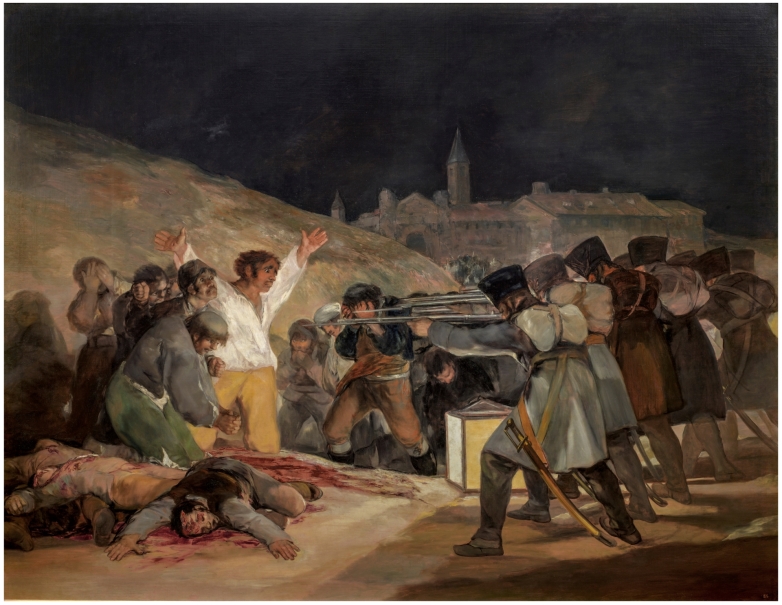The Famous Paintings of the Prado Museum

The Prado Museum, located in Madrid Spain, is one of the world’s foremost art museums. It contains some of the most famous paintings ever produced, including works by Velázquez, Goya, and El Greco. In this article, we will explore some of the most beloved paintings of the Prado Museum, and discuss their historical and artistic significance.
Velázquez’s Las Meninas
Las Meninas is one of the most famous paintings in the world, and a masterpiece of the Spanish Golden Age. Painted by Diego Velázquez in 1656, it depicts a scene in the royal court of King Philip IV of Spain. The painting shows the Infanta Margarita Teresa of Spain surrounded by her entourage of maids of honor, chaperone, a dwarf, and a dog. The painting is notable for its use of perspective, as well as for its exploration of themes of power and identity.
The painting is composed of several figures, all of whom are looking directly at the viewer. This creates the illusion that the viewer is the one being painted. Velázquez himself appears in the painting, standing in the back and looking out at the viewer. This creates an atmosphere of inclusion and participation, as if the viewer is a part of the painting itself.
Velázquez has also used light and shadow to great effect in this painting. The light is focused on the Infanta, casting her in a soft, hazy light that emphasizes her status as a royal. The other figures are in shadow, suggesting their lower social status in comparison to the Infanta. This use of light and dark is one of the hallmarks of Spanish Baroque painting.
Las Meninas has been widely praised for its technical skill, as well as its exploration of themes of power and identity. It is one of the most famous paintings in the world, and a defining work of the Spanish Golden Age.
Goya’s The Third of May, 1808
The Third of May 1808 is a painting by the Spanish painter Francisco Goya. It depicts the events of May 3, 1808, when the Spanish people rebelled against the rule of Napoleon Bonaparte. The painting shows a group of Spanish farmers and members of the Spanish militia being executed by French soldiers.
The painting is remarkable for its emotional intensity. Goya has depicted the scene with a great sense of realism, from the terrified expressions on the faces of the Spanish to the stone-faced expression of the French executioner. This creates a feeling of horror and anguish that is powerfully conveyed through the painting.
The painting also conveys a sense of defiance. Despite the French soldiers’ superior weaponry, the Spanish people are portrayed as brave and determined. This conveys a message of hope despite seemingly insurmountable odds.
The Third of May 1808 is one of Goya’s most famous works, and a defining image of the Spanish War of Independence. It is a powerful and emotionally charged painting that conveys a message of hope and defiance in the face of adversity.
El Greco’s The Annunciation
The Annunciation is a painting by the Spanish master El Greco. It depicts the moment when the angel Gabriel announces to Mary that she will give birth to the son of God. The painting is notable for its use of bright, vivid colors, as well as its dynamic composition.
The painting is composed of two figures: the angel Gabriel and Mary. The angel is positioned on the left side of the painting, with Mary on the right. This creates a sense of dynamism and movement in the painting, as the angel appears to be descending from the heavens to deliver his message.
El Greco has used light and color to great effect in this painting. The angel is bathed in a soft, yellow light, which creates a sense of awe and reverence. Mary is depicted in a warm, orange light, which conveys her emotional state of surprise and wonder. This use of light and color adds a spiritual and emotional depth to the painting.
The Annunciation is a remarkable painting that conveys a sense of awe and reverence. It is a defining work of El Greco, and a beloved masterpiece of the Spanish Golden Age.
Conclusion
The Prado Museum is home to some of the world’s most famous paintings, including works by Velázquez, Goya, and El Greco. In this article, we explored some of the most beloved paintings of the Prado Museum, and discussed their historical and artistic significance. We discussed Velázquez’s Las Meninas, Goya’s The Third of May 1808, and El Greco’s The Annunciation. Each of these paintings is a masterpiece of the Spanish Golden Age, and a beloved symbol of the Spanish people.






